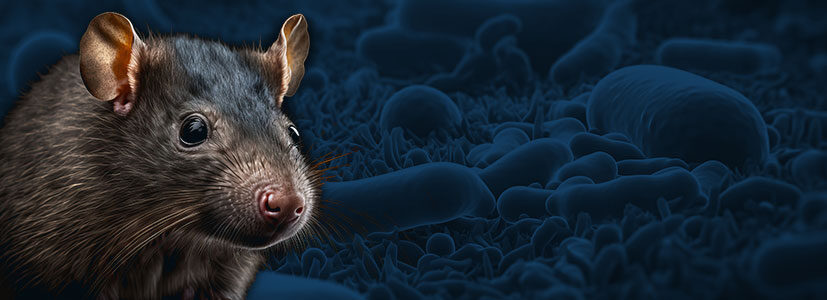
Optimal Recovery of Microbial DNA for 16S Sequencing from Murine Gastrointestinal Tract Tissue Through Bead Mill Homogenization and Automated Nucleic Acid Extraction
The microbiome is a vast interconnected network of viruses, fungi, and bacteria found inside and on the surface of all entities, both living and non-living [1]. This network affects nearly all daily homeostatic functions in humans, including digestion, cognition, and immunity [1]. However, the magnitude and scale of this relationship in our everyday lives is still not fully understood, and continued research is needed to unveil the mysteries of the microbiome.
To aid in the discovery of new relationships and to delve deeper into current relationships we as humans have with our resident microorganisms, researchers must use methods that are not only repeatable and scalable but also maximize the yields of target analytes from challenging matrices. Much of the human microbiome data collection is created by 16S sequencing derived from multiple sources, including swabbing areas of interest, tissue biopsies, or stool samples [2]. Of these sample types, stool samples are often utilized for microbiome projects due to the non-invasive aspects of sample procurement, where tissue biopsy or swabbed samples may be more accurate representations or specifically targeted microbiome locations.
While easier to collect, stool samples have proven to have a host of shortcomings in microbiome research. Stool has been shown to be an inadequate sampling matrix to determine if treatments like probiotics are effectively taking residence inside a patient [3]. Additionally, stool does not allow the researcher to determine if the target organisms are present in desired concentrations at specific regions of the gastrointestinal tract (GI tract) [4]. To add to these conundrums, many sample preparation methods add bias to the downstream sequencing data by not offering a complete DNA extraction of all present microorganisms [5]. Some bacteria, particularly Gram-positive or acid-fast organisms, are resistant to lysis due to the thicker cell walls. These tougher to lyse organisms also resist enzymatic lysis methods and require long incubations for the same reason.
Without complete lysis and recovery of targeted intracellular analytes, tougher to lyse samples will be misrepresented as smaller percentages of populations, and other easier to lyse organisms will be overrepresented. These misrepresentations, established by the initial sample preparation, alter the accuracy and, consequently, our understanding of the data produced.
To address the need for complete lysis and provide quick and repeatable sample preparation, physical lysis of the microbes through bead beating gives optimal results. Bead beating stool samples for DNA recovery have been used for decades and are available in many typical DNA extraction kits [6,7,8]. However, not all bead beating methods provide optimal microbial lysis. When using esoteric samples like tissue that must have not only the microbial population lysed but the complete dissociation of the tissue matrix as well, particular care must be taken to use the correct methods to address the needs of each cell type.
Herein, we detail the selection of optimal bead media that address the lysis and recovery of DNA from liquid culture samples and the recovery of total microbial DNA from solid tissue samples.
